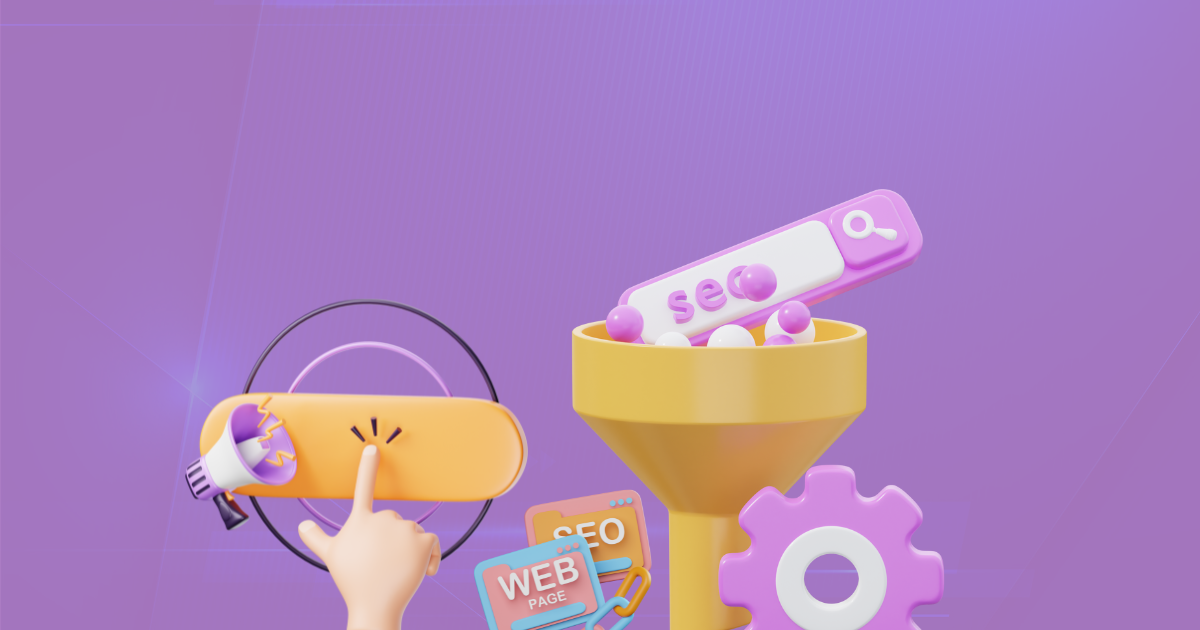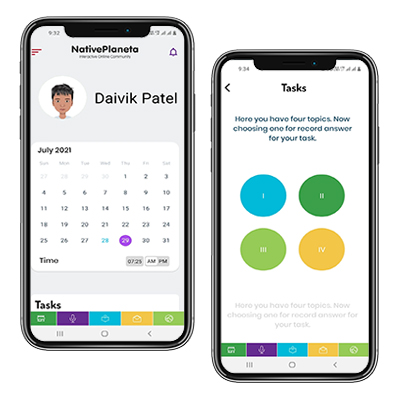
- Alex S.
- 23,Oct 2024
- Design
In this age of technology, a website that looks good isn’t enough; if we want to create a seamless user experience (UX) and increase SEO, we need to focus on it correctly. If you are a business looking to succeed online, the role of a professional website designer will come in handy to balance your UX and SEO.
And whatever you decide to hire – be it a creative website designer or a professional website developer – this guide will teach you how they can improve your website and consequently boost user engagement with the site, as well as search rankings.
Understanding User Experience (UX)

Before discussing how website design affects User Experience, let’s define what User experience is. UX means how your users interact with your website: how easy it is for them to navigate, how quickly they can find what they’re looking for, and how happy they are with the journey.
An excellent creative website designer will know how to direct the user’s path from when they get to your site. You can tell that the layout, color scheme, typography, (the flow of) the whole website is just easy to use and enjoyable.
Critical Elements of UX:
- Navigation: Every user should be able to navigate the site easily and according to their specific needs.
- Mobile Optimization: This is where having a responsive design comes in handy because as mobile traffic is concerned, it will only increase.
- Page Load Speed: The high bounce rates result from slow website loading, reducing users' patience.
- Content Layout: Users prefer easy patterns of content distribution using lines, bullet points, and attractive images.
By focusing on these aspects, a professional website developer can guarantee the traffic and the traffic that will stay on your site.
The Role of Responsive Website Design in UX
To the list of the most excellent opportunities for improving UX, it is possible to include responsive web design services. A quickly responsive website is a must-have in light of the rising number of users using their handheld devices to connect to the internet.
What Is the Responsive Website Design?
Mobile and, in particular, internet-responsive web design implies that your site design is optimized and adapts to your desktops, tablets, and sunglasses. This is important for the experience of users across the different platforms that one is using.
Why Responsive Web Design Matters for UX:
- Improves Accessibility: Our users will always be able to find our site no matter what kind of device they are using.
- Reduces Bounce Rate: If your page is not mobile-friendly, high users will likely leave your site, increasing the bounce rate.
- Enhances Usability: Sites created using the mobile standards are more accessible to navigate, resulting in longer time spent on those sites.
Most professional web designers employ responsive design methods to ensure that your website complies with hard of hearing and other disabled individuals to increase the over-round usability of your website.
How Web Design Affects SEO

That’s enough about UX, reader; now let’s start discussing SEO. Search engine optimization is getting the website to the maximum preference level amongst search engines. Traditional SEO is usually associated with keywords and backlinks, but any professional web developer will tell you that design also heavily influences SEO.
Essential Web Design Factors Affecting SEO:
- Mobile-Friendliness: Mobile responsiveness is also considered as the Google algorithm indexes websites through the mobile version of any website.
- Page Speed: This is terrible news, as slow websites will lead to high bounce rates, resulting in poor rankings.
- Clean Code: A professional website developer ensures your site is coded properly so search engines can easily index it.
- Proper Use of Headings: Correct headings (H1, H2, H3) make the text easier to read and make the search engines quickly rank the content.
A creative website designer who is not ignorant of SEO will create a site that looks good and is ranked well.
Balancing Design with SEO-Friendly Content

A mistake that is usually observed in the use of websites is that most companies emphasize the look of the website rather than the content. Many people designing their websites, especially for commercial purposes, tend to overdo great graphic design or rich content without considering the other. At the same time, a professional web designer understands how to cover the two in equal measure.
Why Content Matters for SEO:
- Keywords: You don’t need to focus on your relevant phrases, but when writing your content, you should integrate your keywords appropriately.
- Content Structure: Organizing your content to avoid long blocks and opting for short paragraphs, bullet lists, and clear section headings and subheadings benefit the reader and the search engine crawlers.
- Multimedia: It is well understood that using images, videos, and infographics causes the user time on the page to increase significantly.
They should work hand in hand with a professional web developer since you can create a site that enhances your content for better SEO results.
Creating Engaging and SEO-Friendly Visuals

Bliss discusses that graphics are an essential component of Web design. An innovative website designer can design beautiful visuals that attract users’ attention. However, these visuals should also be used to promote better SEO results on the web.
Best Practices for Optimizing Visuals:
- Alt Text: This function indicates to the search engines what the picture represents if the alt text is used.
- File Size: The trick is that large images take a long time to load and hence should be compressed.
- Descriptive File Names: Do not title your image as “IMG123.jpg,” but try using a keyword such as “professional-website-design.jpg.”
By following the right approach, visuals benefit both UX and SEO, making your site popular and easy on the eye.
The Importance of Internal Linking

Another area that professional website developers can contribute is internal linking. Internal links are indispensable for satisfactory site usability and help to better distribute link juice across the site.
Benefits of Internal Linking:
- Improves User Navigation: Users can navigate the content that is related to them and, as such, enhance their experience.
- Boosts SEO: Using internal links goes a long way in helping search engines understand the structure of your website, making it easier for it to be crawled and have better ranks.
Proper internal link placement ensures your visitors easily navigate your site while improving your ranking.
Collaborating with a Professional Website Developer

Any aspiring business wanting to be an online operations expert must consult a professional web developer. Whether in programming languages or aesthetics, a professional can do it, from writing code to finding the right host. But collaboration is critical.
Tips for Working with a Website Developer:
- Communicate Your Vision: Defining the business objectives and objectives you have set for the website is necessary.
- Discuss SEO Strategies: Make sure your developer knows your SEO goals for the site so they can develop semantically.
- Stay Involved: Even after engaging a developer, do not sit back and cross your arms while all the work is being done, let alone smile when the end product is complete.
By avoiding common pitfalls in communication, you can guarantee that the site will provide superb usability and rankings.
The Impact of Call-to-Actions (CTAs) on UX and SEO

Most of the time, it helps to have an efficient call to action since users going through your website need to be led towards doing something – signing up for a newsletter, for example, or buying a product. Not only do well-designed CTAs help augment UX, but they also improve the SEO for a website since they induce users to engage and make conversions.
How to Design Effective CTAs:
- Clarity: Explicit and succinct to the instruction that should be provided to the users.
- Visibility: Ensure your call-to-action buttons are in low-contrast color schemes to look highly noticeable to visitors.
- Placement: Place CTAs where users are more likely to make the call to action at the end of topics like blogs or individual pages like a landing page.
Thus, when layouts are developed with high levels of usability for the user interface and optimized engagement for CTAs, desired levels of UX and SEO can be achieved.
Monitoring and Improving UX and SEO Over Time

Thus, augmenting the UX and SEO is incomplete when your site is live and functioning. A professional website designer will go further to ensure that he supervises the site performance and makes the necessary changes occasionally. Other features, such as Google Analytics and heat maps, can prove helpful in identifying users' areas of interest.
Why Ongoing Optimization is Necessary:
- User Behavior Changes: True to these trends, users expect the same. This way, your site will stay valid and up-to-date because of the frequent checkups.
- SEO Algorithm Updates: Search engines are in constant flux, and for your site to remain relevant in terms of usability and ranking, you have to follow changes.
- Performance Issues: That is why it is necessary to perform routine audits to determine if there are such problems as slow loading certain pages, which is dangerous for both UX and SEO.
This means that when you regularly monitor your site and in consultation with a professional web developer, you will be able to ensure that your site is competitive and compliant with existing standards of UX and SEO.
A professional website designer is involved in much more than skin-deep—they enhance usability and help search engines crawl your site. Regardless of whether you need responsive web design services, creating appropriate textual and visual content, or SEO for images, their service is critical to your online success.
This way, a professional website developer cannot only consider all the technical aspects of the website, rating it as high as possible but also provide users with easy and pleasant navigation through the site. This fusion of UX and SEO results in higher engagement levels, improved ranking, and higher conversion rates.
While starting a business or renovating an existing one for its online image, investing in a successful website designer who understands the markets of User Experience and Search Engine Optimization only makes sense.
Ready to Hire Professional Website Designer
Get Ready to Make your website more stunning or attractive today with iGex Solutions web design services! Contact us now!
Email: info@igexsolutions.com
Book Online Meeting: Book now!
Contact no: +1 727 998 7028
Web Portfolio
Mobile Portfolio
Categories
What good is an idea if it remains an idea? Let's put efforts together to give it a look of Website or Mobile Application.
Let’s Start a discussion









